Squatting With Resistance Bands
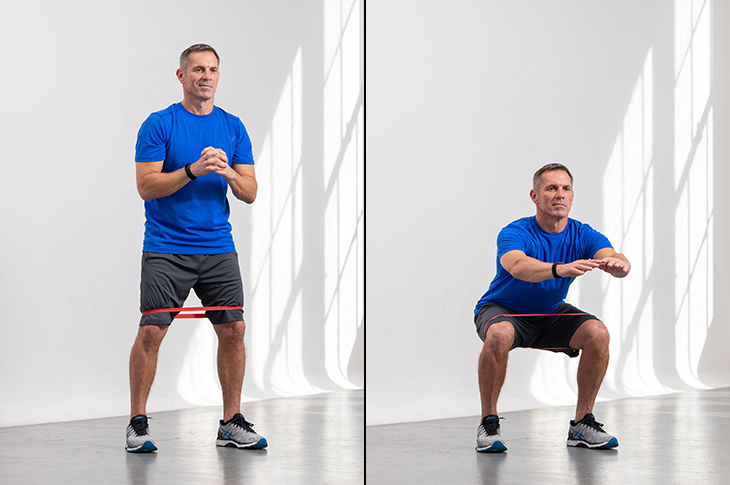
If you're looking to take your squatting to the next level, then you might want to consider using resistance bands. Squatting with resistance bands is a popular technique used by athletes and fitness enthusiasts alike to build strength, improve balance, and increase muscle activation. In this article, we'll take a closer look at the benefits of squatting with resistance bands and how to do it properly.
What are Resistance Bands?

Resistance bands are elastic bands that come in a variety of thicknesses and lengths. They are commonly used in strength training exercises to add resistance to movements and increase muscle activation. Resistance bands are versatile and can be used for a variety of exercises, including squatting.
Benefits of Squatting with Resistance Bands
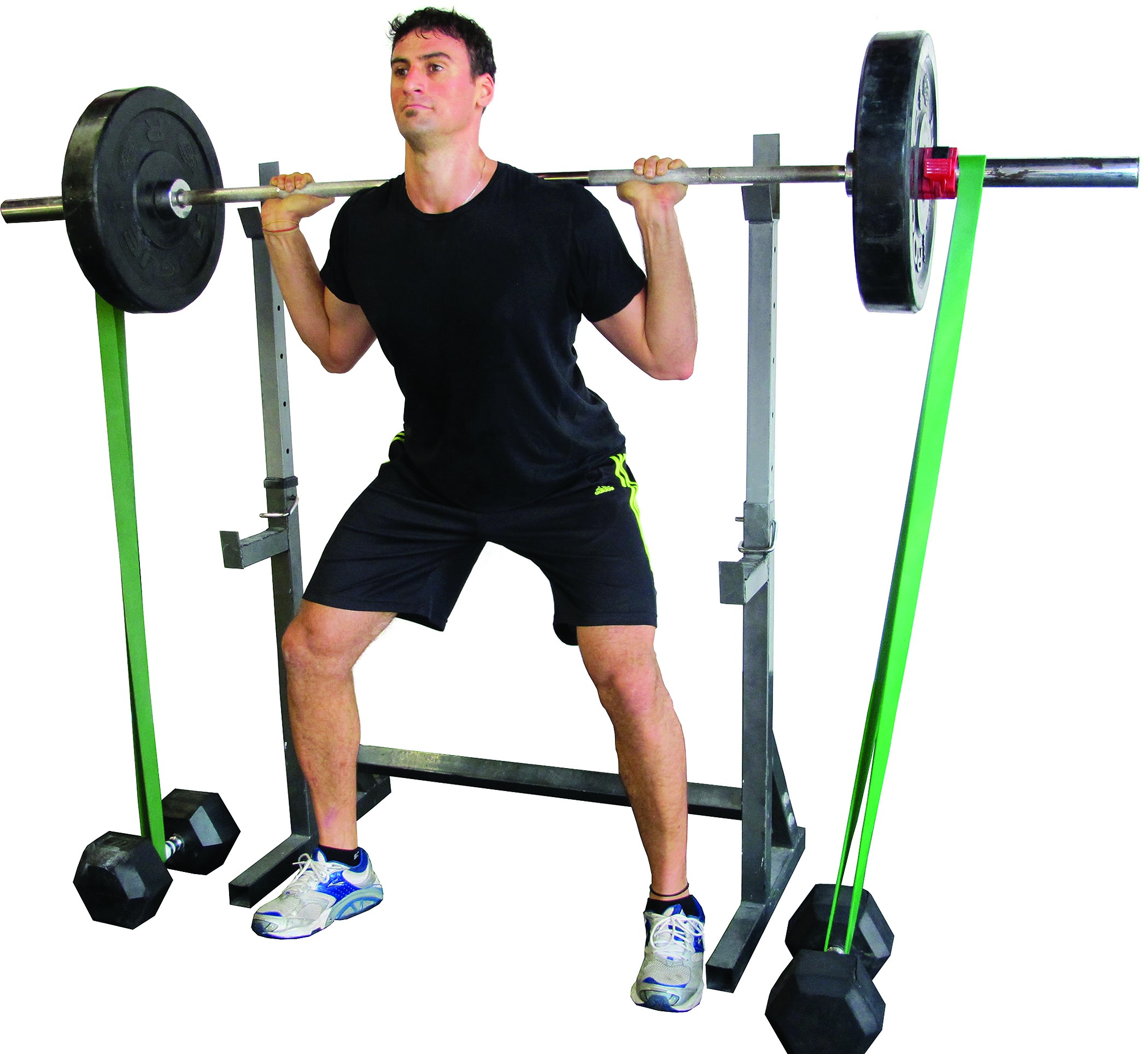
Squatting with resistance bands offers a range of benefits, including:
- Increased muscle activation
- Improved balance and stability
- Greater range of motion
- Increased strength and power
- Reduced risk of injury
How to Squat with Resistance Bands

To squat with resistance bands, follow these steps:
- Start by standing on the middle of the resistance band with your feet shoulder-width apart.
- Hold the ends of the band and bring them up to your shoulders, so the band is resting on the back of your shoulders.
- Squat down, keeping your weight on your heels and your chest up.
- As you stand up, push through your heels and extend your legs while pulling the band up toward your chin.
- Lower the band back down to your shoulders as you squat down again.
- Repeat for the desired number of reps.
Variations

There are a few variations of squatting with resistance bands that you can try, including:
- Squat with a looped band around your knees to work your glutes and hips.
- Squat with a band attached to a stationary object behind you to increase resistance.
- Hold the band at chest height instead of on your shoulders to work your upper body as well.
Tips for Proper Form

When squatting with resistance bands, it's important to maintain proper form to avoid injury and get the most out of the exercise. Here are some tips:
- Keep your weight on your heels and your chest up.
- Don't let your knees cave in or track too far forward.
- Engage your core and squeeze your glutes at the top of the movement.
- Use a mirror or have someone watch your form to ensure proper technique.
Conclusion
Squatting with resistance bands is a great way to add variety and intensity to your squatting routine. By using resistance bands, you can increase muscle activation, improve balance and stability, and increase strength and power. Remember to maintain proper form and start with a lighter resistance band before progressing to a heavier one. Happy squatting!
Related video of Squatting with Resistance Bands: A Comprehensive Guide
Narrow Grip Push Ups

If you're looking to build upper body strength, narrow grip push ups are an excellent exercise to add to your workout routine. This variation of the traditional push up targets your triceps, chest, and shoulders, and also engages your core muscles. In this article, we'll discuss the benefits of narrow grip push ups and how to perform them correctly.
Benefits of Narrow Grip Push Ups

1. Triceps Development: Narrow grip push ups primarily target your triceps, helping you to build strong and toned arms.
2. Chest and Shoulder Strengthening: While narrow grip push ups are primarily a triceps exercise, they also work your chest and shoulders. This makes them an excellent compound exercise that targets multiple muscle groups.
3. Improved Core Strength: Like traditional push ups, narrow grip push ups also engage your core muscles, helping to develop a strong and stable core.
4. Increased Range of Motion: Because your hands are closer together during narrow grip push ups, you'll be able to move through a greater range of motion than you would during traditional push ups. This can help to improve flexibility and mobility in your upper body.
How to Do Narrow Grip Push Ups

1. Start by getting into a plank position, with your hands directly under your shoulders and your feet hip-width apart. Your body should form a straight line from your head to your heels.
2. Move your hands closer together, so that your thumbs are touching and your index fingers are pointing straight ahead.
3. Lower your body towards the ground by bending your elbows, keeping your elbows close to your body. Your chest should be just above the ground.
4. Push back up to the starting position, keeping your body in a straight line throughout the movement.
5. Repeat for the desired number of reps.
Tips for Performing Narrow Grip Push Ups
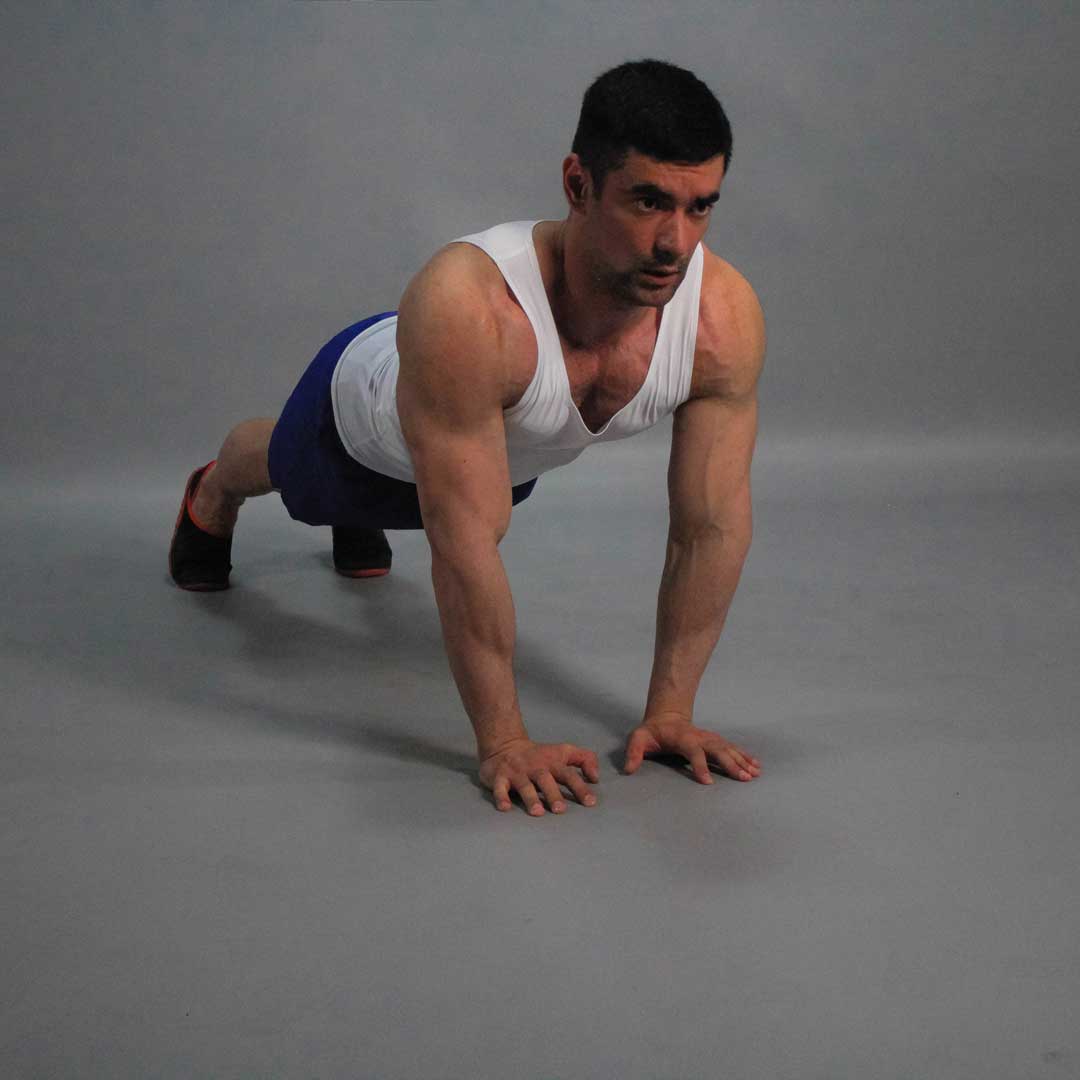
1. Keep your elbows close to your body throughout the movement to target your triceps more effectively.
2. Engage your core muscles throughout the exercise to maintain proper form and prevent your hips from sagging.
3. Don't let your chest touch the ground during the movement. Instead, lower your body until your chest is just above the ground.
4. Breathe in as you lower your body towards the ground, and exhale as you push back up.
Incorporating Narrow Grip Push Ups into Your Workout Routine

Narrow grip push ups can be incorporated into your regular workout routine in a number of ways. Here are a few ideas:
1. Add them to your upper body workout: Include narrow grip push ups in your regular upper body workout to target your triceps, chest, and shoulders.
2. Use them as a finisher: Finish off your workout with a set of narrow grip push ups to really burn out your triceps and chest.
3. Do them as part of a circuit: Incorporate narrow grip push ups into a circuit workout, alternating them with other exercises to keep your heart rate up and challenge your muscles.
Conclusion
Narrow grip push ups are an excellent exercise for building upper body strength and improving core stability. By incorporating them into your regular workout routine, you can target multiple muscle groups and achieve a toned, lean physique. Remember to maintain proper form throughout the movement, and don't be afraid to challenge yourself by increasing the number of reps or sets over time.
Related video of Narrow Grip Push Ups - Benefits and How to Do Them
Swiss Ball Oblique Crunch

The Swiss Ball Oblique Crunch is an incredibly effective exercise that targets your obliques, the muscles on the sides of your abs. It is a great way to tone and strengthen your core, improve your posture, and enhance your overall fitness level.
What is a Swiss Ball Oblique Crunch?
A Swiss Ball Oblique Crunch is a variation of the traditional crunch exercise that is performed using an exercise ball or Swiss ball. The ball adds an element of instability to the exercise, making it more challenging and engaging your core muscles even more.
How to Perform a Swiss Ball Oblique Crunch

Here are the steps to perform a Swiss Ball Oblique Crunch:
- Start by sitting on the Swiss ball with your feet flat on the ground and your knees bent at a 90-degree angle.
- Place your hands behind your head or across your chest.
- Slowly roll back on the ball until your lower back is supported by it.
- Exhale and engage your core muscles to lift your torso up towards the ceiling.
- As you lift up, twist your torso to one side and bring your elbow towards your opposite knee.
- Lower your torso back down to the starting position while inhaling.
- Repeat the exercise on the other side.
- Continue alternating sides for the desired number of repetitions.
Benefits of Swiss Ball Oblique Crunches
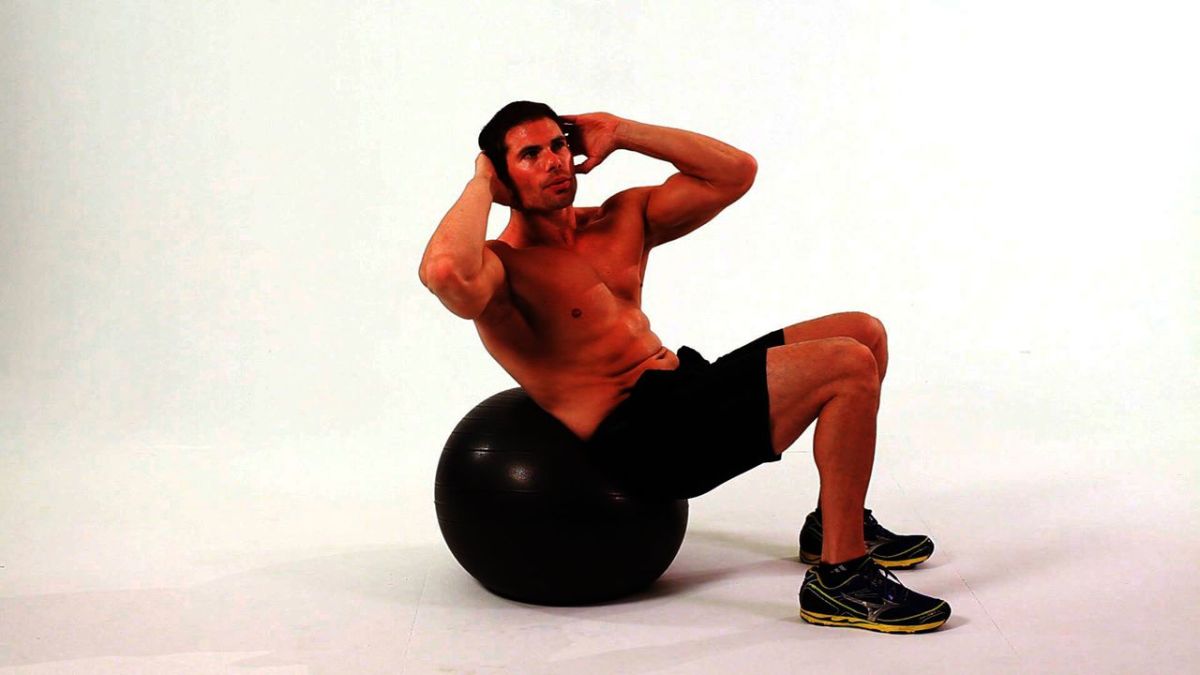
Swiss Ball Oblique Crunches offer numerous benefits, including:
- Toning and strengthening your oblique muscles.
- Improving your overall core strength and stability.
- Enhancing your posture and spinal alignment.
- Improving your balance and coordination.
- Engaging multiple muscle groups at once for a more efficient workout.
- Adding variety to your exercise routine.
Tips for Performing Swiss Ball Oblique Crunches Safely
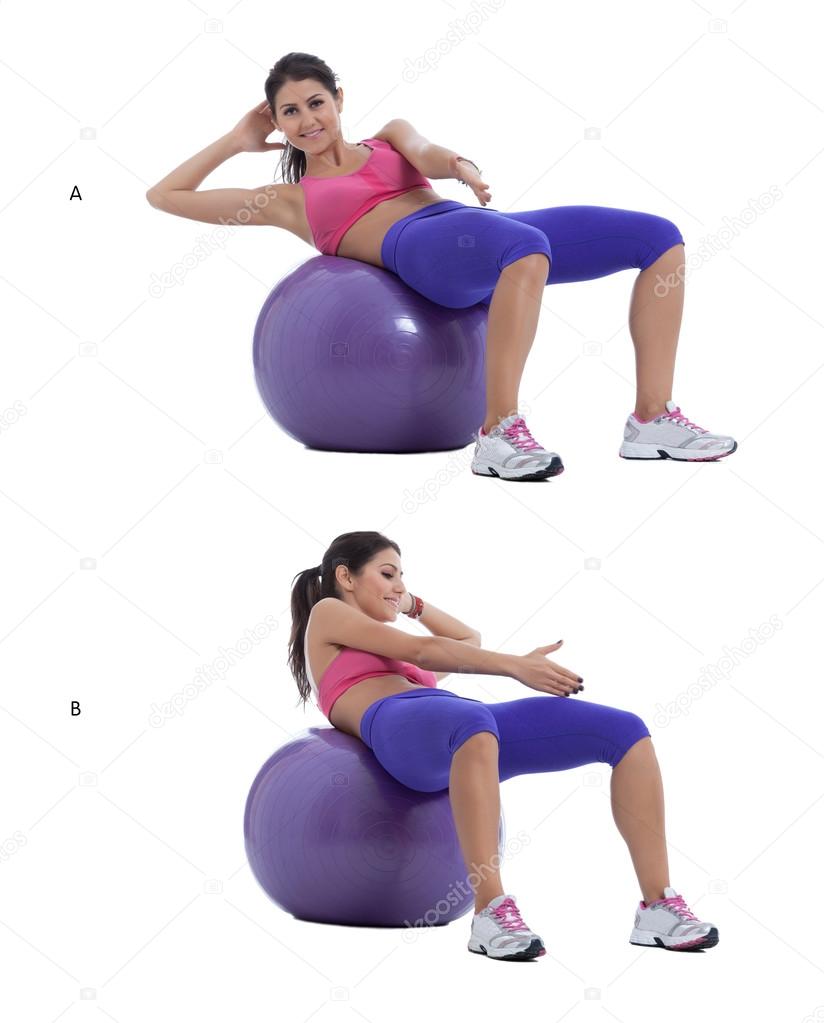
Here are some tips to help you perform Swiss Ball Oblique Crunches safely and effectively:
- Choose a ball that is the right size for you. When seated on the ball, your hips should be slightly higher than your knees and your feet should be flat on the ground.
- Engage your core muscles throughout the exercise to protect your lower back.
- Avoid using momentum to lift your torso. Instead, focus on using your abs to initiate the movement.
- If you feel any pain or discomfort, stop the exercise immediately.
- Begin with a lower number of repetitions and gradually increase as your strength and fitness level improves.
Incorporating Swiss Ball Oblique Crunches into Your Workout Routine

Swiss Ball Oblique Crunches can be incorporated into your workout routine in a variety of ways. Here are some ideas:
- Add them to your regular ab workout for an extra challenge.
- Perform them as part of a full-body circuit workout.
- Alternate them with other core exercises, such as planks or Russian twists.
- Incorporate them into a Pilates or yoga routine for added core strength and stability.
Conclusion
The Swiss Ball Oblique Crunch is a highly effective exercise that targets your oblique muscles and offers numerous benefits for your overall fitness and well-being. By incorporating this exercise into your workout routine, you can tone and strengthen your core, improve your posture, and enhance your overall fitness level. So grab a Swiss ball and give it a try!
Related video of Swiss Ball Oblique Crunch: The Ultimate Abdominal Exercise
Barbell Clean And Press

Barbell clean and press is an effective strength training exercise that targets multiple muscle groups in your body, including your shoulders, back, legs, hips, and core. This compound exercise involves two separate movements - the clean and the press - which together help you build strength, power, and explosiveness.
The Clean

The first part of the barbell clean and press is the clean. To perform this movement, stand with your feet shoulder-width apart and grip the barbell with an overhand grip, hands slightly wider than shoulder-width apart. Keep your back straight and your knees slightly bent.
Next, lift the barbell off the floor by extending your hips and knees. As the barbell rises, pull it towards your body and keep your elbows high. When the barbell reaches your chest, quickly rotate your elbows under the bar and "catch" it in a front squat position. Stand up tall and hold the barbell at chest level.
The Press
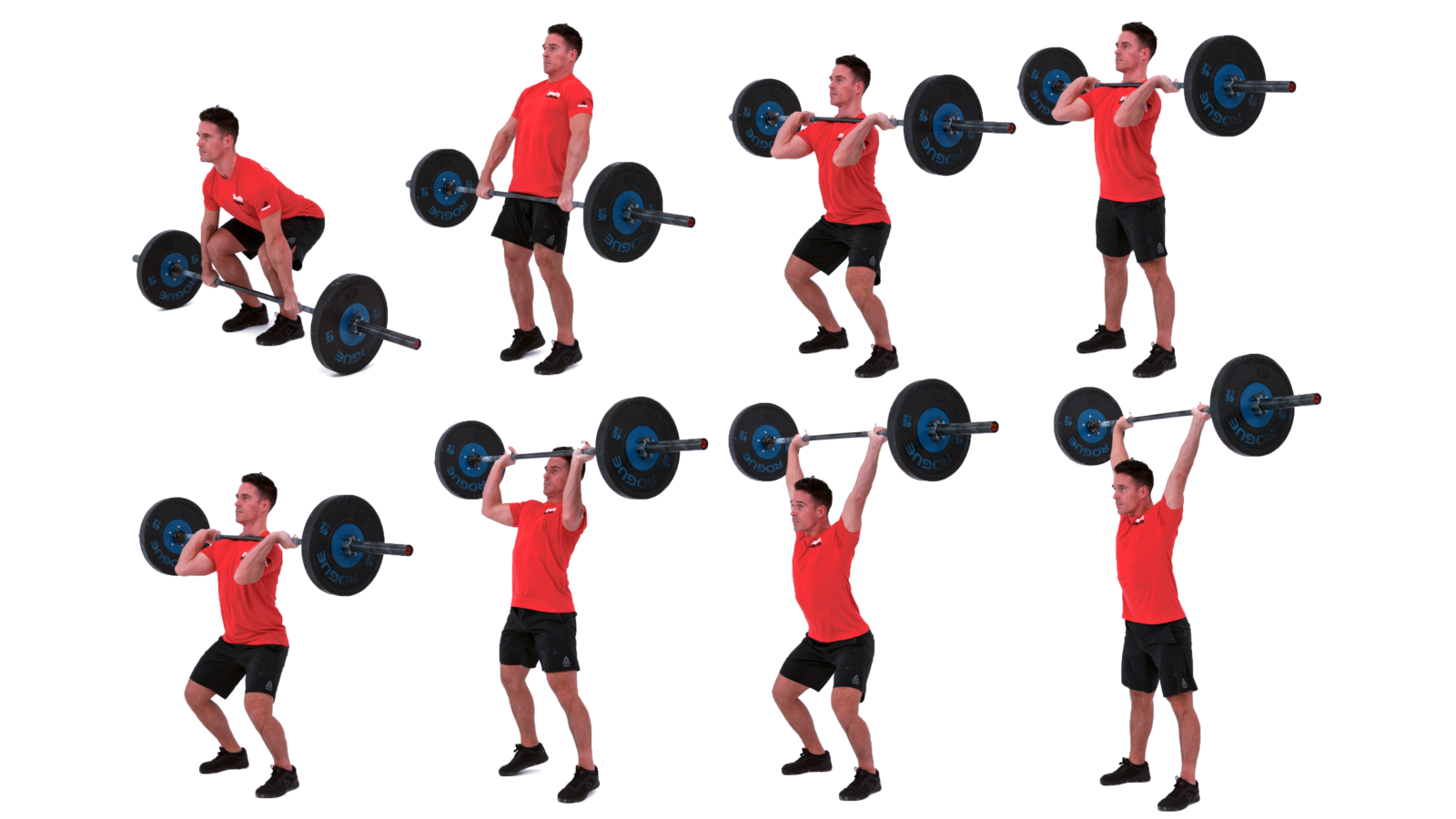
The second part of the barbell clean and press is the press. From the front squat position, brace your core and stand up tall. Take a deep breath and press the barbell overhead, fully extending your arms. Keep your core tight and your back straight throughout the movement.
Lower the barbell back down to your chest and bring it back down to the floor to complete one rep. Repeat for the desired number of reps.
Tips for Success

Here are some tips to help you perform the barbell clean and press with proper form:
- Start with a light weight and focus on proper form before increasing the weight.
- Keep your back straight throughout the movement to avoid injury.
- Use your legs to lift the barbell off the floor, not your back.
- Keep your elbows high during the clean to prevent the barbell from swinging away from your body.
- Brace your core during the press to maintain stability and prevent injury.
Variations

There are several variations of the barbell clean and press that you can try to add variety to your workouts:
- Push press: Instead of starting with a clean, use your legs to help you press the barbell overhead.
- Hang clean and press: Start with the barbell at hip level instead of on the ground.
- Dumbbell clean and press: Use dumbbells instead of a barbell for a different challenge.
Benefits of Barbell Clean and Press

The barbell clean and press is a full-body exercise that offers numerous benefits for your physical fitness and overall health:
- Builds strength and power in multiple muscle groups.
- Improves explosiveness and speed.
- Increases muscle size and definition.
- Boosts cardiovascular health and endurance.
- Enhances overall athletic performance.
Conclusion
The barbell clean and press is a challenging exercise that can help you build strength, power, and explosiveness. By following proper form and incorporating variations into your workouts, you can get the most out of this full-body exercise and achieve your fitness goals.
Related video of Barbell Clean And Press: Build Strength and Power
Straight Bar Cable Row

If you're looking for a great exercise to target your back, then the straight bar cable row is definitely worth considering. This exercise is great for building upper body strength, improving posture, and increasing overall back thickness. It's also relatively easy to perform and can be done with minimal equipment.
How to do a Straight Bar Cable Row

Begin by standing in front of a cable machine with your feet shoulder-width apart. Grasp the straight bar attachment with an overhand grip, making sure your hands are slightly wider than shoulder-width apart. Keep your back straight, your core tight, and your knees slightly bent.
Pull the bar towards your chest, keeping your elbows close to your body. Squeeze your shoulder blades together at the top of the movement, and then slowly lower the bar back to the starting position. Repeat for the desired number of repetitions.
Variations of the Straight Bar Cable Row

There are a few variations of the straight bar cable row that you can try to add some variety to your workout:
- Wide-grip straight bar cable row: Use a wider grip on the bar to target the outer portion of your back.
- Narrow-grip straight bar cable row: Use a narrower grip on the bar to target the inner portion of your back.
- Underhand grip straight bar cable row: Use an underhand grip on the bar to target your biceps as well as your back.
Tips for a Better Straight Bar Cable Row

Here are a few tips to help you get the most out of your straight bar cable row:
- Focus on pulling with your elbows rather than your hands.
- Keep your shoulders down and away from your ears throughout the movement.
- Use a weight that allows you to perform the exercise with good form.
- Exhale as you pull the bar towards your chest, and inhale as you lower it back down.
- Don't rush the movement - focus on slow, controlled reps.
The Benefits of the Straight Bar Cable Row

The straight bar cable row is a great exercise for a number of reasons:
- It targets multiple muscles in your back, including your lats, rhomboids, and traps.
- It's a compound movement, meaning it works multiple joints and muscles at the same time, which can lead to greater overall strength gains.
- It's a low-impact exercise, making it a great option for those with joint pain or injuries.
- It can be easily modified to target different areas of your back.
Conclusion
The straight bar cable row is a great exercise for anyone looking to build upper body strength and improve their posture. With a few variations and some tips for proper form, you can make this exercise a staple in your workout routine. Give it a try and see the benefits for yourself!